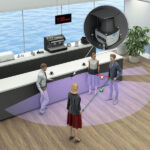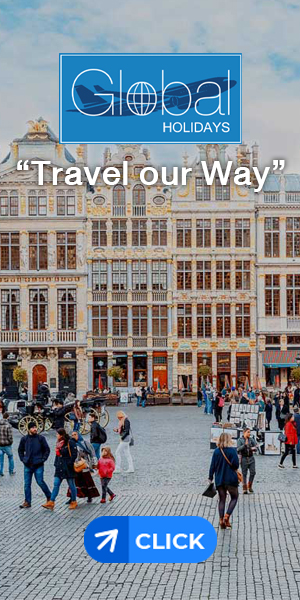 A company aptly called SICK has developed new electronic sensors that can manage social distancing on board cruise ships.
A company aptly called SICK has developed new electronic sensors that can manage social distancing on board cruise ships.
The sensors use what SICK say is intelligent LiDAR sensor technology for the new SICK SensorApps, PeopleCounter and DistanceGuard.
SICK says that the sensor solutions, which do not include personal information, count people in defined open and closed spaces and ensuring the recommended minimum distance, with the company saying it is helping flag states, port authorities and classification societies in their request new hygiene concepts and certifications for infection prevention in the maritime industry.
SICKadded that due to the complexity on a ship, it is challenging to meet increased hygiene standards without technical support, with SICK’s people counter able to help cruise lines scan public areas, with the 3D-LiDAR sensor MRS1000 generating the measurement data.
SICK says that the integrated SensorApp PeopleCounter reliably identifies people based on their outline, meaning only people are counted and other objects are hidden, with the app processing the data anonymously and personal identification not recorded.

The use of four-layer sensor technology means peoples directions of movement can also be clearly determined and the and defined zones monitored, even larger areas with different entrances and exits, with the collected data output via telegrams and digital outputs.
SICK says that it particularly challenging for ship to ensure that the minimum distances between people are observed in particular at check-in or in restaurants, which is where in particular, SensorApp DistanceGuard works particularly well in conjunction with the TiM series 2D-LiDAR sensor, with the sensor solution determining the distance between two people.
In addition, as soon as the distance falls below the configured minimum distance, an optical or acoustic signal is generated and advises the persons to adjust the minimum distance themselves.
SICK also supplies a portfolio that protects areas from unauthorized access, where motion profiles of individual or entire groups can be recorded and visualized in real time, when the 2D-LiDAR sensor LMS1xx in combination with the software visualizes and analyzes the number, direction and speed of people. For example, overcrowded escape routes can be detected early and passengers can be diverted.

A report by John Alwyn-Jones
















